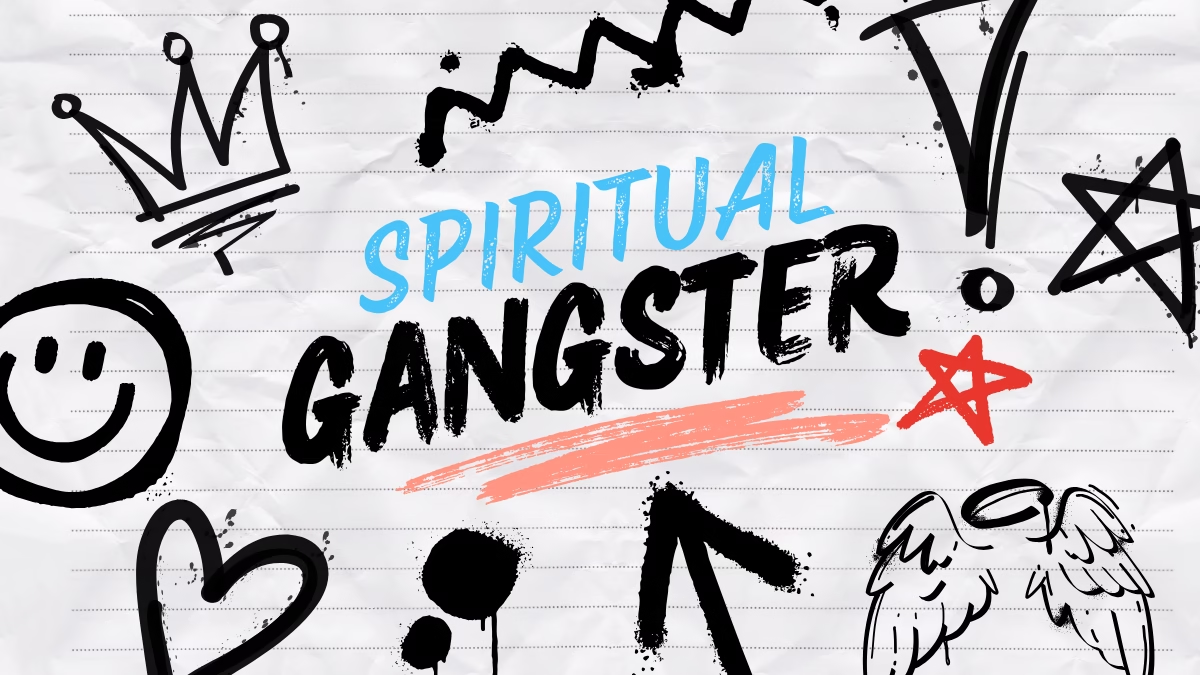
The Importance of Step 10 in AA: A Stoic Perspective
Step 10 of Alcoholics Anonymous (AA) gives us a break from the grueling effort of cleaning up our past to secure our future. A huge congratulations if you just finished Step 9. I know it was no walk in the park, but it was courageous work that needed to be done. Now let’s move on to Step 10: “Continued to take personal inventory and when we were wrong promptly admitted it.”
Step 10 of Alcoholics Anonymous (AA) is often referred to as the “maintenance step.” It emphasizes the importance of staying vigilant about our thoughts, actions and behaviors, even after significant progress in our recovery journey. While the earlier steps focus on addressing past mistakes and building a foundation for sobriety, Step 10 is about developing the habit of self-reflection and making it a lifelong practice.
This step safeguards against complacency. By this stage, individuals in recovery have addressed the significant issues in their lives, such as admitting powerlessness (Step 1), making amends (Steps 8 and 9) and cultivating spiritual awareness (Step 11). However, life presents challenges, temptations and moments of emotional instability. Step 10 provides a practical mechanism for maintaining progress and addressing new issues as they arise.
Bill Wilson, co-founder of AA, wrote in “The Twelve Steps and Twelve Traditions”: “It is a spiritual axiom that every time we are disturbed, no matter what the cause, there is something wrong with us.” Bill clearly understood the importance of personal responsibility in emotional disturbances and highlighted the necessity of regular self-examination.
Maintaining sobriety with Step 10
Step 10 is a powerful tool for maintaining our emotional and spiritual health. Early in recovery, one’s health can be fragile as we are learning to live sober, making the act of taking personal inventory regularly that much more critical. We need to take great care in not becoming complacent once we have strung together a few 24 hours of sobriety. Alcoholism is “cunning, baffling and powerful” and will take any opportunity to regain control of our lives.
A great example of taking advantage of an opening is a story in the Big Book “More About Alcoholism” (page 36). There is a story about Jim who, after being irritated by his boss, goes out on a sales trip and finds himself in a roadside cafe where the following happened: “Suddenly the thought crossed my mind that if I were to put an ounce of whiskey in my milk it couldn’t hurt me on a full stomach. I ordered a whiskey and poured it into the milk. I vaguely sensed I was not being any too smart, but felt reassured as I was taking the whiskey on a full stomach. The experiment went so well that I ordered another whiskey and poured it into more milk. That didn’t seem to bother me so I tried another.”
As in many other areas of our lives, we must be aware of and overcome what our ego may tell us while working on Step 10. Often, the ego will try to convince us that we are not actually in the wrong. The ego does this as a protective mechanism. We typically do not have pleasant feelings about ourselves after committing a wrong and sometimes feel even worse when making amends. The ego wants to avoid having these bad feelings and will do its best to rationalize that there is no need to confront and take responsibility for the actions that lead to these feelings.
Doing our best to stay present and understand what is happening with our emotions is our most effective defense against relapse. Whether we are 24 hours or 24 years sober, the big bad wolf is consistently working to blow our house down!
How to Work Step 10 in AA
1) Daily inventory: Daily inventory means setting aside time each day to reflect on our thoughts, feelings and actions. This process helps us identify instances where we may have been selfish, dishonest, resentful or fearful. It’s an opportunity to evaluate how we handled situations and relationships and to recognize areas where we could have acted differently. Our inventory is not limited to things we have done wrong! Be sure to note acts of kindness, progress on goals we have set for ourselves or other positive acts we have committed.
We can do this exercise in our heads and leave it at that. While that is great, there is a lot more value in writing our thoughts down. There are a couple of reasons this is important. First, having a journal gives us a tool to go back over time and see if there might be patterns in our behavior. A disturbance is subtle and may only be slightly irritable, but if we look back through our journal, we may see that this one-time disturbance now arises multiple times a month. Seeing these patterns can point us to areas we need to address.
Secondly, writing down an entry is a physical reminder that we are doing what we must do. It is a way of holding ourselves accountable. Jerry Seinfeld writes a joke a day. He keeps a calendar where he puts a big red X through the date when he has completed his joke for the day.
This approach has several benefits but mainly taps into the human desire to maintain streaks and avoid breaking visible progress, creating an external layer of accountability. If you need help to get in the habit of working on Step 10, giving this a try might help.
2) Promptly admit our wrongs: If you need a refresher on some tips on admitting our wrongs and making amends, please take a look at the article on Step 9 that covers the topic in depth. For me, there are two critical aspects to admitting our wrongs. The first is mustering courage, embracing humility and taking action. The second is doing it with sincerity. We are often angry or disappointed with ourselves for committing the wrong we have, and we may bring some of those emotions into the amends. Making sure we are in the right mindset and conveying the message in a meaningful way is essential.
Face-to-face is the best way to admit our wrongs, but sometimes that is not feasible. We may need to do it over the phone or on a video call if circumstances require it. Assuming the person we have wronged is alive, I don’t think you should apologize via text, email or other written communication. While they technically count, these approaches shelter us from experiencing the emotions that arise during these interactions. Often, these interactions are unpleasant — and fully experiencing them can act as a deterrent for repeating or creating new wrongs.
Taking action does not need to be complicated. We can communicate what we did and how we know it was wrong — and then sincerely apologize. Say we stood someone up for dinner; we can say, “I know I was supposed to meet you for dinner, and I did not show up or let you know I would not be there. I apologize for doing that and feel terrible about it.” That is it!
If we apologize for exchanging harsh words with someone, it is vital to directly apologize for our behavior and not bring the other person’s actions into the conversation. It is counterproductive to say, “I am sorry for calling you names the other day when I was angry. It was not right, but your insults really upset me.”
The Stoic Connection
When viewed through the lens of Stoicism, the philosophical frameworks of self-control, virtue and service align beautifully with the principles embodied in Step 10. Both traditions emphasize the importance of living in harmony with one’s values, helping others, and accepting life’s challenges with grace and wisdom.
Self-Examination and the Stoic Connection
The practice of self-examination is central to Step 10 and finds a remarkable parallel in the Stoic tradition. Marcus Aurelius, the Roman emperor and Stoic philosopher, wrote in his Meditations: “When you arise in the morning, think of what a precious privilege it is to be alive — to breathe, to think, to enjoy, to love.” This daily reflection echoes the proactive mindset encouraged in Step 10.
Stoicism teaches that external events are beyond our control, but our responses are within our power. Step 10 aligns with this principle by emphasizing personal responsibility and the necessity of correcting one’s mistakes promptly. By integrating the Stoic practice of mindfulness and reflection, those in recovery can better identify patterns of thought or behavior that threaten their sobriety and well-being.
The Daily Inventory
A personal inventory involves reflecting on one’s actions, thoughts and emotions. In AA, this practice is often structured through questions such as:
• Was I resentful, selfish, dishonest or afraid today?
• Did I owe an apology?
• Was I kind and loving toward all?
• What could I have done better?
• Was I thinking of myself most of the time or was I thinking of what I could do for others?
These questions align with the Stoic practice of nightly review. Seneca, another prominent Stoic philosopher, wrote: “When the light has been removed and my wife has fallen silent… I examine my entire day and go back over what I’ve done and said, hiding nothing from myself, passing nothing by.” This discipline of self-review ensures continuous moral and spiritual development.
Prompt Admission of Wrongdoing
One of Step 10’s distinguishing features is the prompt admission of wrongdoing. This requires humility and courage — two virtues highly regarded in AA and Stoicism. Admitting mistakes immediately prevents them from festering into guilt, resentment or shame. It also fosters trust and strengthens relationships, which are crucial for a person’s recovery journey.
Epictetus, a Stoic philosopher, taught: “If someone is mistaken, instruct them kindly and show them their error. But if you cannot, blame yourself — or no one.” This advice reflects the essence of Step 10: taking responsibility for one’s actions without shifting blame or engaging in self-pity.

12-Step STOICISM SERIES by Tony Harte:
Finding Power in Powerlessness: Step 1 and Stoicism
Finding a Higher Power & Stoic Wisdom | Step Two
Step 3: Surrender, Stoicism & Your Higher Power in Recovery
Step 4: Moral Inventory & Stoic Wisdom for Recovery
Step 5 Guide: Admitting Wrongs & Finding Freedom
AA Step 6: A Guide to Willingness and Change
AA Step 7 Explained: The Power of Humility in Recovery
Step 8: A Path to Healing and Accountability
How Step 9 in AA Helps You Release Guilt, Build Trust and Find Peace

SPIRITUAL GANGSTER: at The Sober Curator is a haven for those embracing sobriety with a healthy dose of spiritual sass. This space invites you to dive into meditation, astrology, intentional living, philosophy, and personal reflection—all while keeping your feet (and your sobriety) firmly on the ground. Whether you’re exploring new spiritual practices or deepening an existing one, Spiritual Gangster offers inspiration, insight, and a community that blends mindful living with alcohol-free fun.

Resources Are Available
If you or someone you know is experiencing difficulties surrounding alcoholism, addiction, or mental illness, please reach out and ask for help. People everywhere can and want to help; you just have to know where to look. And continue to look until you find what works for you. Click here for a list of regional and national resources.







1 Comment
Loved this Tony! Lately I have thought that 10 step is sooo critical for long term recovery! I’ve watched so many peeps get complacent and life gets messy all over again! Great writing, great advice, deep inquiry! Thank you!! We will definitely have to do a video on stoicism, I know nothing!